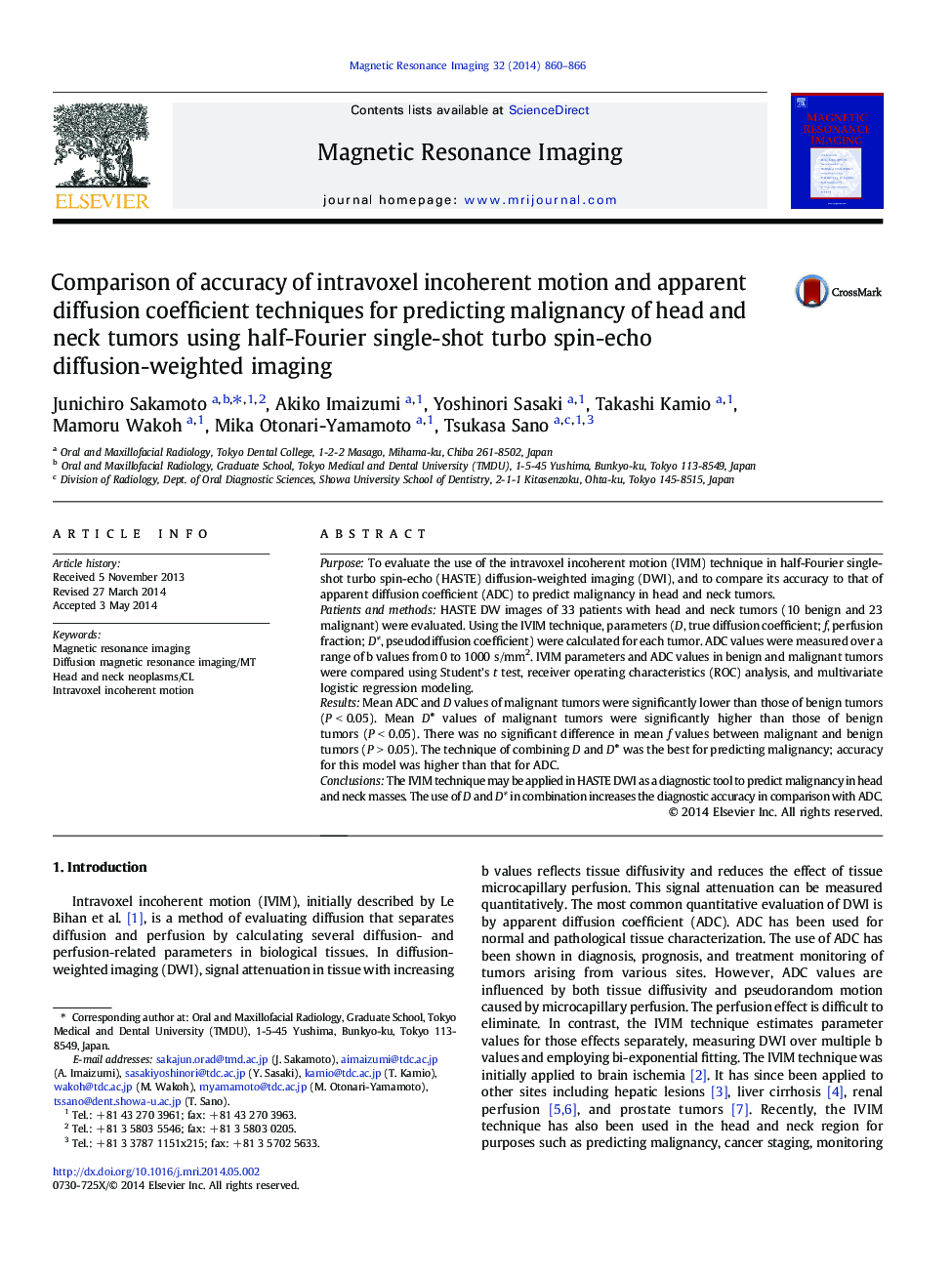| Article ID | Journal | Published Year | Pages | File Type |
|---|---|---|---|---|
| 1806416 | Magnetic Resonance Imaging | 2014 | 7 Pages |
PurposeTo evaluate the use of the intravoxel incoherent motion (IVIM) technique in half-Fourier single-shot turbo spin-echo (HASTE) diffusion-weighted imaging (DWI), and to compare its accuracy to that of apparent diffusion coefficient (ADC) to predict malignancy in head and neck tumors.Patients and methodsHASTE DW images of 33 patients with head and neck tumors (10 benign and 23 malignant) were evaluated. Using the IVIM technique, parameters (D, true diffusion coefficient; f, perfusion fraction; D*, pseudodiffusion coefficient) were calculated for each tumor. ADC values were measured over a range of b values from 0 to 1000 s/mm2. IVIM parameters and ADC values in benign and malignant tumors were compared using Student's t test, receiver operating characteristics (ROC) analysis, and multivariate logistic regression modeling.ResultsMean ADC and D values of malignant tumors were significantly lower than those of benign tumors (P < 0.05). Mean D* values of malignant tumors were significantly higher than those of benign tumors (P < 0.05). There was no significant difference in mean f values between malignant and benign tumors (P > 0.05). The technique of combining D and D* was the best for predicting malignancy; accuracy for this model was higher than that for ADC.ConclusionsThe IVIM technique may be applied in HASTE DWI as a diagnostic tool to predict malignancy in head and neck masses. The use of D and D* in combination increases the diagnostic accuracy in comparison with ADC.
